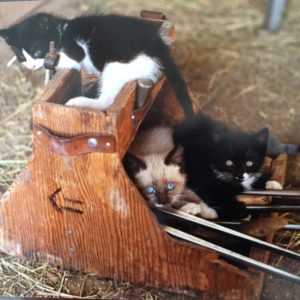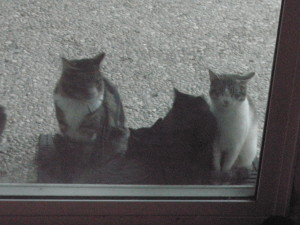 Much of the US is experiencing a killer freeze. Wildfires rage through the Western states. Some communities are still dealing with the aftermath of mega-storms. And, while there are wonderful stories of animals being rescued from dire situations caused by these disasters, there are many more instances of un- or under-reported tragedies—cats (and other animals) freezing to death, getting caught up in flood waters, or being left behind to die in flames.
Much of the US is experiencing a killer freeze. Wildfires rage through the Western states. Some communities are still dealing with the aftermath of mega-storms. And, while there are wonderful stories of animals being rescued from dire situations caused by these disasters, there are many more instances of un- or under-reported tragedies—cats (and other animals) freezing to death, getting caught up in flood waters, or being left behind to die in flames.
What can we do to make sure animals are safe in extreme weather and disaster situations? Plenty! But let’s start at home. Especially if you live in an area that is expected to or typically floods, burns, etc, have a plan that includes your pets. Have enough carriers for your cats. If you adopt a new cat, purchase a new carrier. Stock up on your pets’ food. Know ahead of time how you will corral the animals to move them out of danger’s way—especially those that aren’t accustomed to being handled or who fight going inside a carrier.
We have a formerly feral cat that we cannot pick up. She’ll sit on our lap and invite petting, but you cannot hold her. We’ve learned that when we need to take her to the vet or when we had to evacuate recently because of wildfires, if we grab her by the scruff of the neck and her back and hold her down on the floor, we can bring the carrier to her and scoot her into it without much trauma. But it does take two people, most of the time, to accomplish this task.
but you cannot hold her. We’ve learned that when we need to take her to the vet or when we had to evacuate recently because of wildfires, if we grab her by the scruff of the neck and her back and hold her down on the floor, we can bring the carrier to her and scoot her into it without much trauma. But it does take two people, most of the time, to accomplish this task.
But what about those cats who live outside—feral cats and other throwaway cats in your neighborhood? Is anyone watching out for them? Why not provide housing for them so they can more comfortably tolerate severe winter weather. Hunt down unused dog houses and move them to where the cats are hanging out.
Use plastic storage bins and cut a narrow entrance. Install a flap to keep the freezing air out. Position the cat houses off the ground and use fresh straw in the bottom of it instead of fabric of any kind, which can freeze.
When feeding outside or feral cats in winter, change their food and water often. Spray insulation foam on the bottom of bowls to keep the food from freezing. Use deep water bowls with a pinch of sugar to help give the cats more energy to survive the freeze and to help keep the water from freezing. These are just a few of the ideas offered at this site: http://www.thecatsmeowrescue.org/blog-feline-friends/feral-cats-deserve-warmth-this-winter9529203
 There are plans for building simple shelters for cats. http://animalalliancenyc.org/nycfci/newsletter/2009-12/shelters.htm Or buy an outdoor cat shelter for under $100.
There are plans for building simple shelters for cats. http://animalalliancenyc.org/nycfci/newsletter/2009-12/shelters.htm Or buy an outdoor cat shelter for under $100.
You may turn away from stories of cats who die in severe weather conditions. Or once it starts to get cold, you begin to worry about the cats that live outdoors. Better that, if we know about a homeless cat or a colony of feral cats, we act sooner rather than later to protect them. Learn how to care for them yourself or call a humane group that works with homeless cats. And do this before winter sets in or before the fire season begins.
It’s already too late for some cats. Many will not survive this winter. But let’s do our part to help the cats that are struggling now and protect those who will be facing the elements in the future. https://www.coloradoanimalrescue.org/2018/01/help-outdoor-cats-winter/
What do you do to help protect cats in the elements? We could all use some inspiration and ideas.





